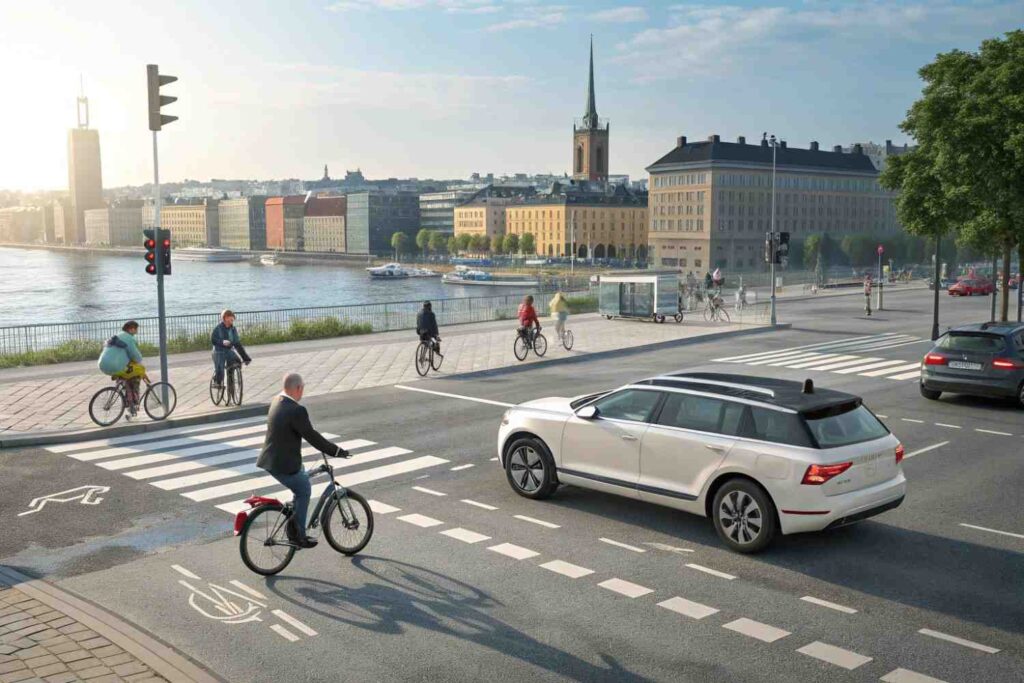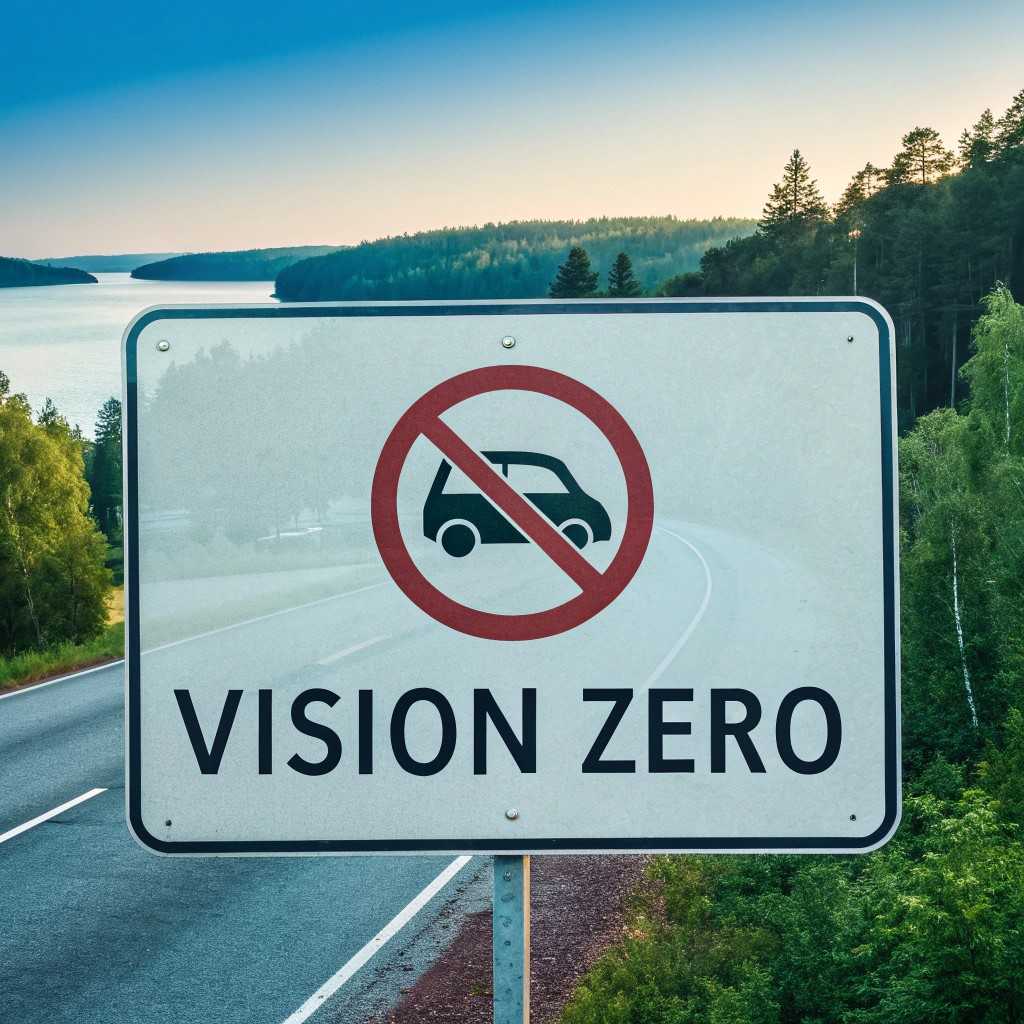Road accidents shatter families, leaving lifelong trauma, grief, and economic hardship. Each fatality destroys livelihoods, while survivors face permanent disabilities and psychological scars. Globally, over 1.3 million deaths occur annually, creating ripple effects across communities and healthcare systems.
Countries tackle this crisis through varied strategies. The Netherlands prioritizes cyclists with extensive bike infrastructure. Norway enforces strict speed limits and vehicle standards. Australia runs awareness campaigns alongside enforcement. Yet Sweden leads with ‘Vision Zero’, slashing fatalities from 541 in 1997 to around 200 today—a 50%+ reduction despite rising traffic.
Sweden’s ‘Vision Zero’ policy is a pioneering road safety approach that treats every death and serious injury on the road as preventable, not inevitable, and offers a powerful blueprint for India’s quest to reduce its alarming burden of accident deaths. By combining ethical clarity, system-wide design changes, and strict accountability for road designers and vehicle makers, ‘Vision Zero’ has helped Sweden cut road fatalities by about half since the early 2000s, even as traffic has grown.

What ‘Vision Zero’ Actually Means
‘Vision Zero’ was adopted by the Swedish Parliament in 1997 as a long-term road safety goal that no one should be killed or seriously injured in road traffic. At its core is a shift in responsibility: instead of blaming individual drivers or pedestrians, the policy holds system designers—governments, road authorities, vehicle manufacturers, and enforcement agencies—primarily accountable for preventing fatal consequences when people inevitably make mistakes.
Under ‘Vision Zero’, the transport system is designed to match human tolerance to kinetic energy, meaning that speed limits, road layouts, and vehicle safety standards are engineered so that crashes, when they occur, do not translate into deaths or life-changing injuries. This “safe system” approach guides choices like lowering speed limits in urban areas, installing roundabouts instead of traditional intersections, protecting pedestrians and cyclists as priority users, and pushing automakers to build safer vehicles.
In the decades after ‘Vision Zero’ launch, Sweden embedded road safety into transport planning, policing, and infrastructure investments, treating fatalities as a system failure rather than an individual error. National targets for 2030 now include cutting fatalities by 50% and serious injuries by 25% compared to earlier baselines, building on already substantial reductions since the early 2000s.
These gains came from a mix of measures: widespread use of roundabouts, median barriers on high-speed roads, strict drink-driving enforcement, lower urban speed limits, and strong promotion of seat belts and helmets. As a result, Sweden today ranks among the world’s safest countries on the road, with far fewer deaths per 100,000 inhabitants than global and European averages, making ‘Vision Zero’ a benchmark for other nations.
India’s Road Safety Crisis and Why ‘Vision Zero’ Matters Here
India, by contrast, is grappling with a severe and growing road safety crisis, even as it aspires to cut road deaths by 50% by 2030 under global commitments. In 2023, India recorded over 4.8 lakh road accidents leading to around 1.72 lakh deaths, with daily averages of more than 1,300 crashes and nearly 500 fatalities, making the country one of the worst-affected globally in absolute numbers.
Official data for 2022 showed roughly 1.68 lakh deaths from over 4.6 lakh road accidents, meaning almost 462 people died on Indian roads every single day that year. Many of these deaths are preventable: for 2023 alone, around 54,000 fatalities were linked to two-wheeler riders not wearing helmets, about 16,000 to non-use of seat belts, and over 12,000 to vehicle overloading, underscoring the deadly impact of weak enforcement and unsafe behavior.
India’s current reality shows a gap between policy ambition and on-ground outcomes: while national road safety strategies exist, the country still witnesses an average of 55 crashes and 20 deaths every hour. Unlike ‘Vision Zero’s’ explicit ethical stance that any road death is unacceptable, India’s approach often treats accidents as unfortunate but routine, with responsibility largely placed on individual drivers rather than system designers.
Embedding a ‘Vision Zero’ mindset in India would mean redefining success from “fewer accidents” to “no deaths or serious injuries,” and aligning road design, enforcement, vehicle standards, and public messaging around this non-negotiable goal. It would also require transparent data, strong institutional coordination, and long-term investment—much like the sustained, multi-decade effort Sweden undertook to transform its roads into a safer system.

Early Indian Experiments with a ‘Vision Zero’ Approach
Despite the grim national picture, some Indian cities and states have begun implementing policies that echo ‘Vision Zero’ principles by redesigning roads and using technology to reduce crashes. Kerala, for example, has installed over 700 AI-powered cameras to automatically detect violations and issue fines digitally, with the explicit objective of cutting accidents by half through deterrence and continuous monitoring.
Cities like Bengaluru and Delhi are deploying intelligent traffic management systems that use AI-enabled and radar-based cameras to track overspeeding, red-light jumping, and other risky behaviors, helping police shift from sporadic checks to 24/7 evidence-based enforcement. Though India’s overall deaths remain high, such initiatives demonstrate how cities can combine enforcement technology, public awareness campaigns, and better junction design to push accident numbers down over time.
Adapting ‘Vision Zero’ for India would mean prioritizing vulnerable road users—pedestrians, cyclists, and two-wheeler riders—through safer crossings, protected lanes, and strict speed management in urban areas. It would also involve treating helmet and seatbelt non-use not as minor lapses but as high-risk failures of system design and enforcement, given their link to tens of thousands of deaths each year.
Just as Beijing’s “smog to blue skies” turnaround proved that even extreme air pollution can be reversed with coordinated, science-driven policy, Sweden’s ‘Vision Zero’ shows that road deaths are not an unavoidable cost of development. For India’s cities, the path forward lies in embracing the same combination of ethical clarity, data-led design, and sustained political will—turning scattered pilot projects into a nationwide commitment that every journey, whether in Stockholm or Chennai, should begin and end in safety.
The Logical Indian Take
The Logical Indian sees ‘Vision Zero’ as more than a global best practice—it is a moral framework that insists every road death is a preventable failure of the system, not an unavoidable “accident.” By shifting focus from blaming individual drivers to questioning how roads are designed, how vehicles are regulated, and how laws are enforced, ‘Vision Zero’ aligns closely with the platform’s commitment to people-first narratives and accountability-driven journalism.
Through deeply reported explainers, data-led visuals, and consistent coverage of both policy gaps and successful reforms, The Logical Indian can help embed this mindset in public conversation and policymaking. By highlighting stories of victims’ families, documenting evidence from cities experimenting with safer design and AI-enabled enforcement, and convening experts, officials, and citizens, the platform can push India towards a future where the only acceptable target is that every journey begins and ends in safety.













